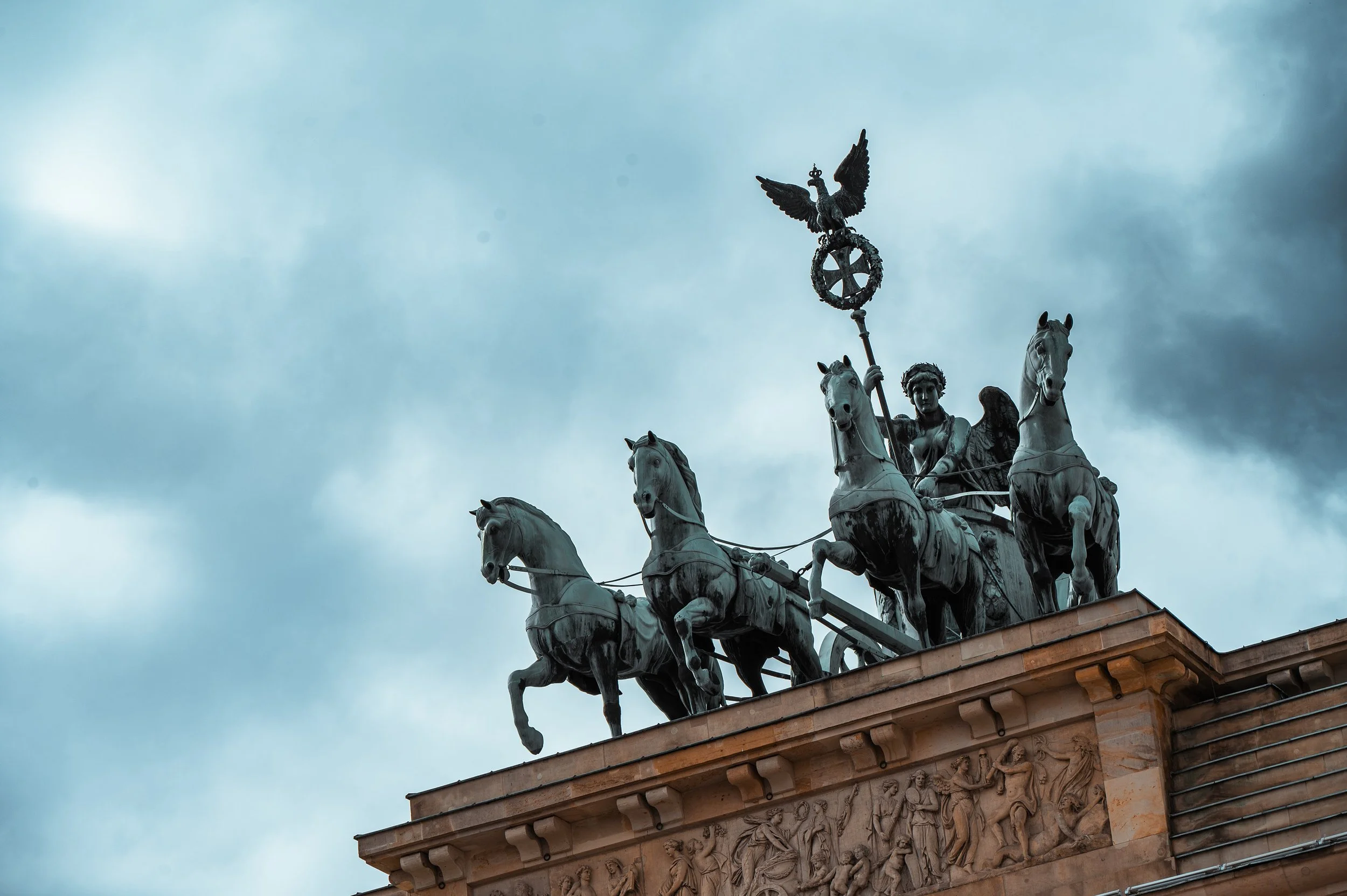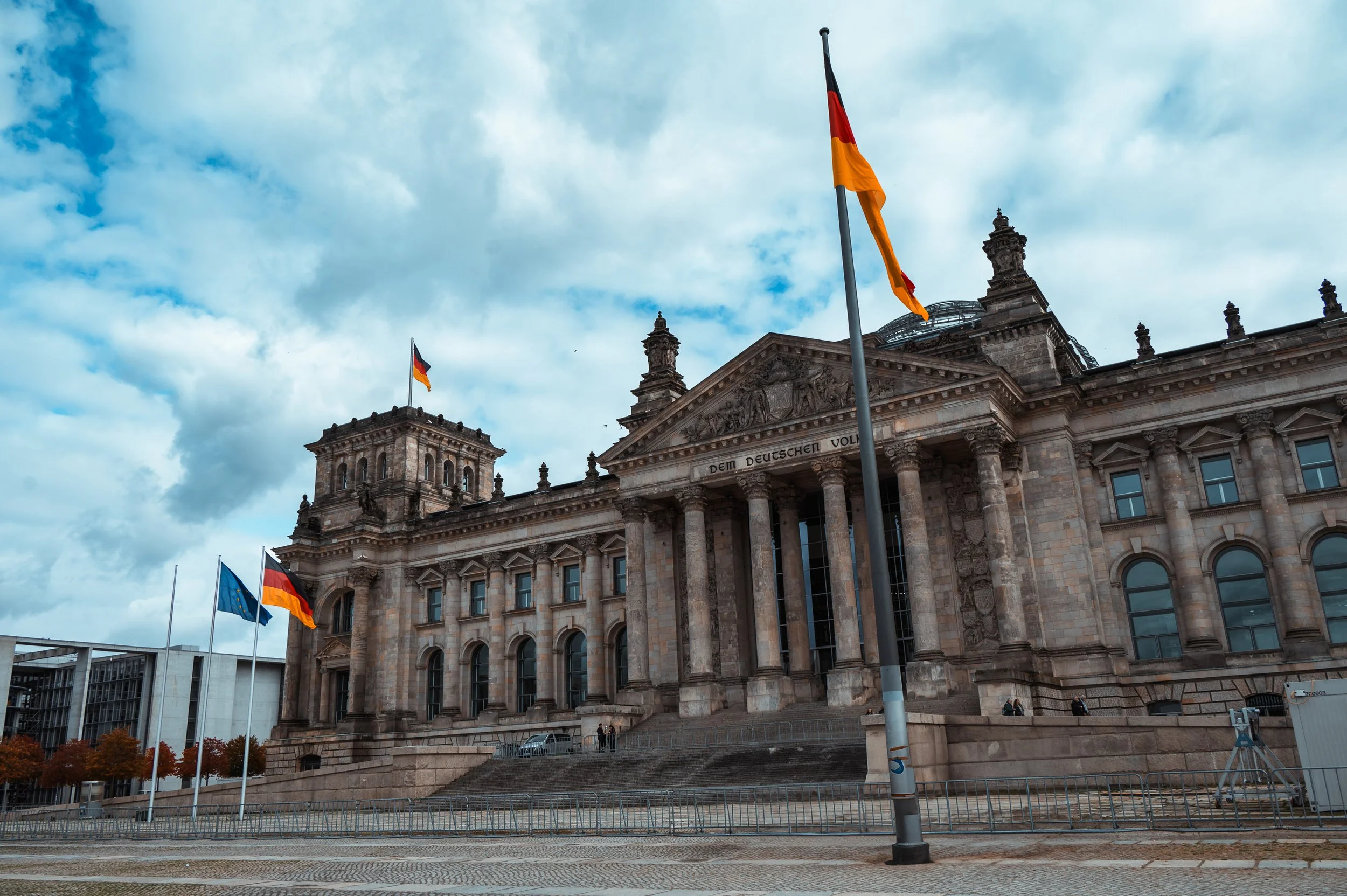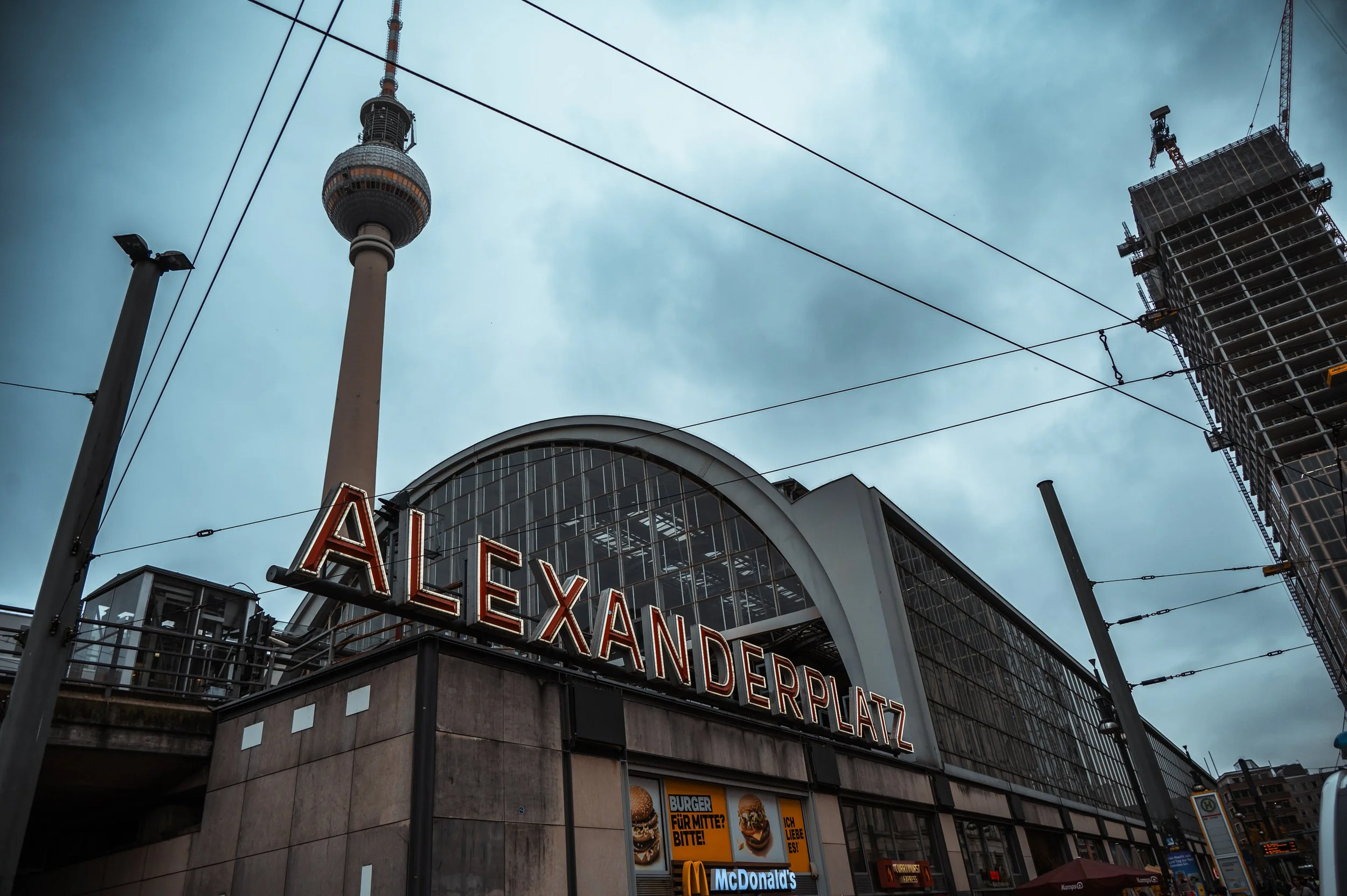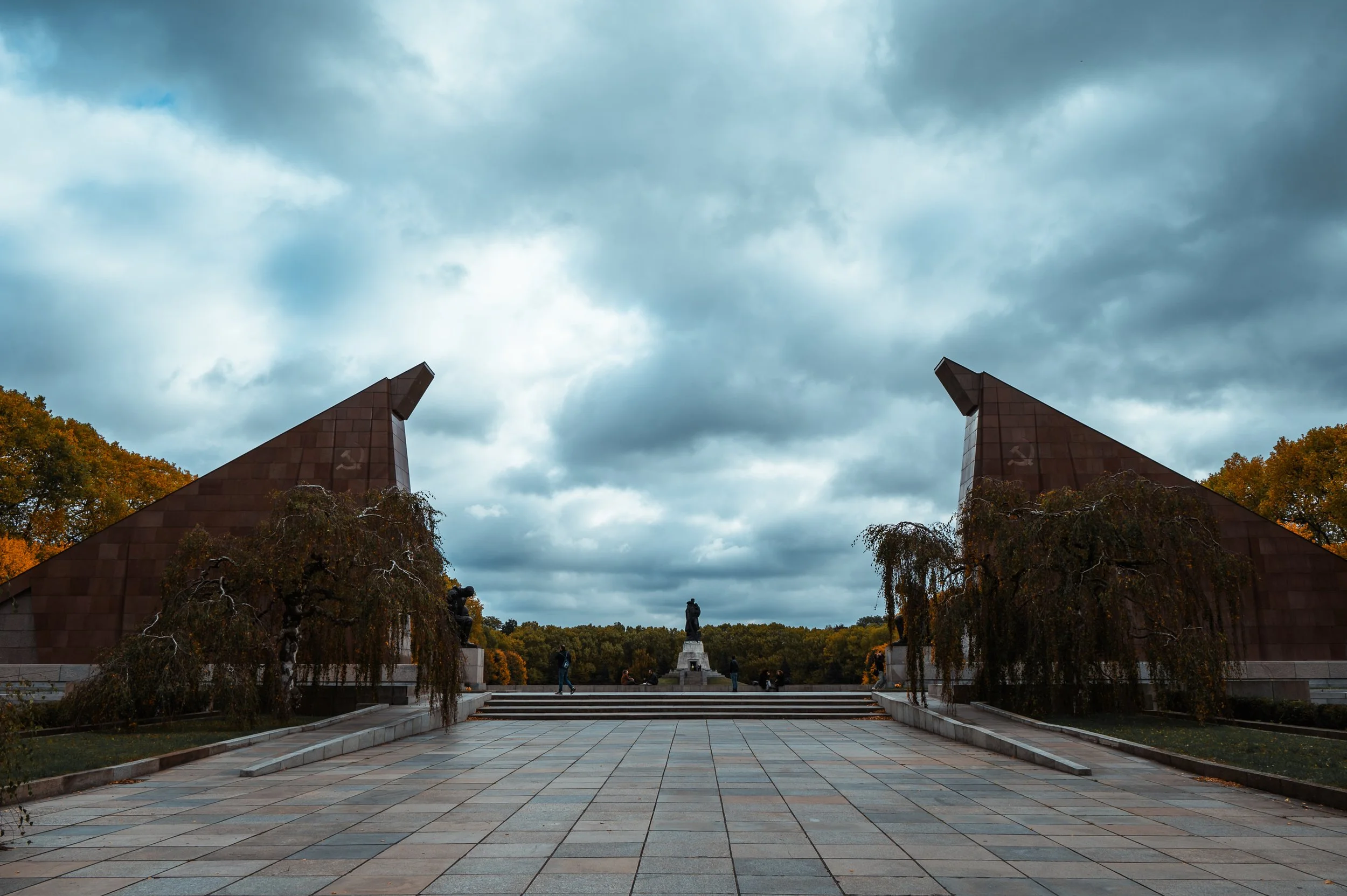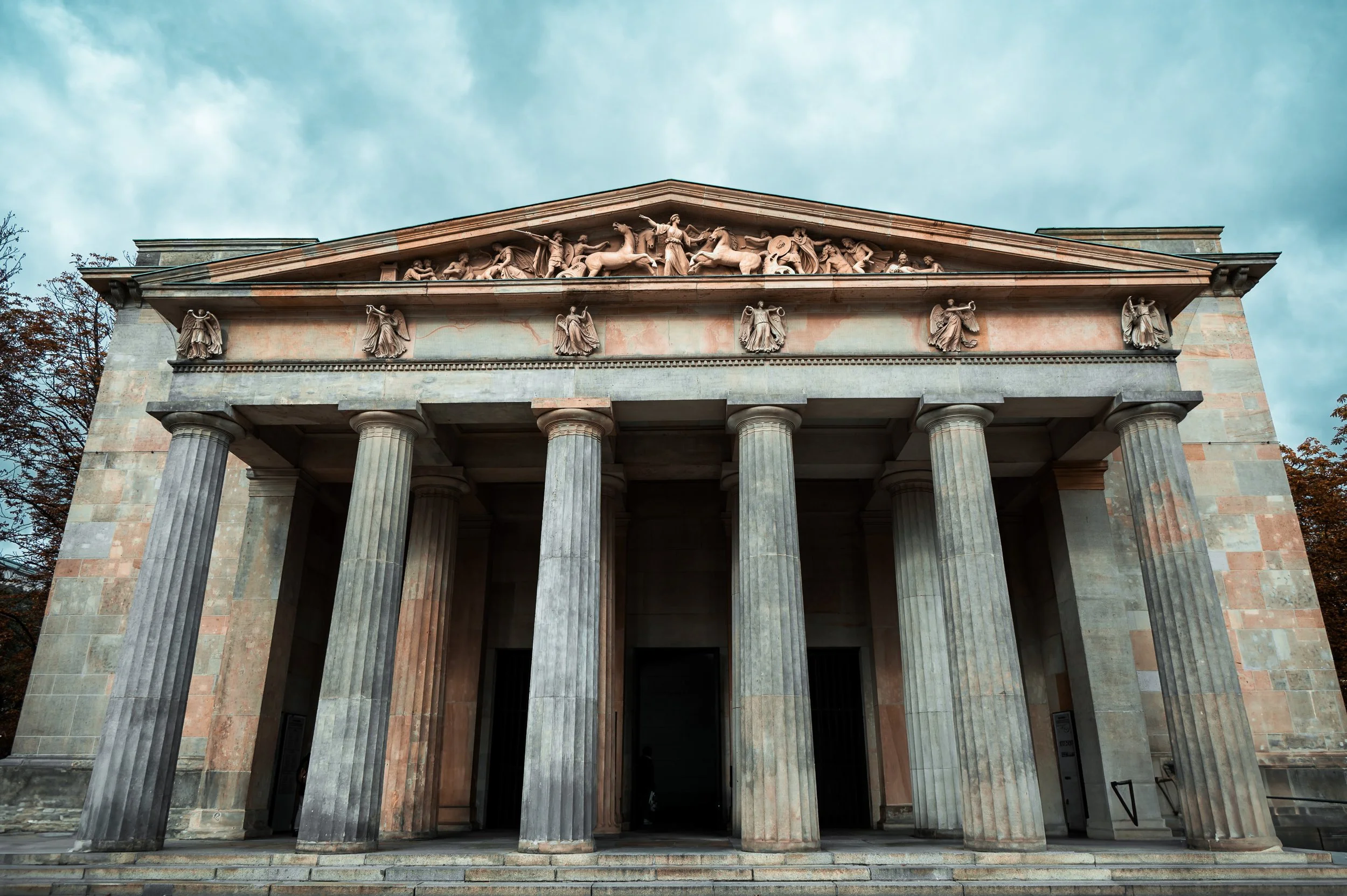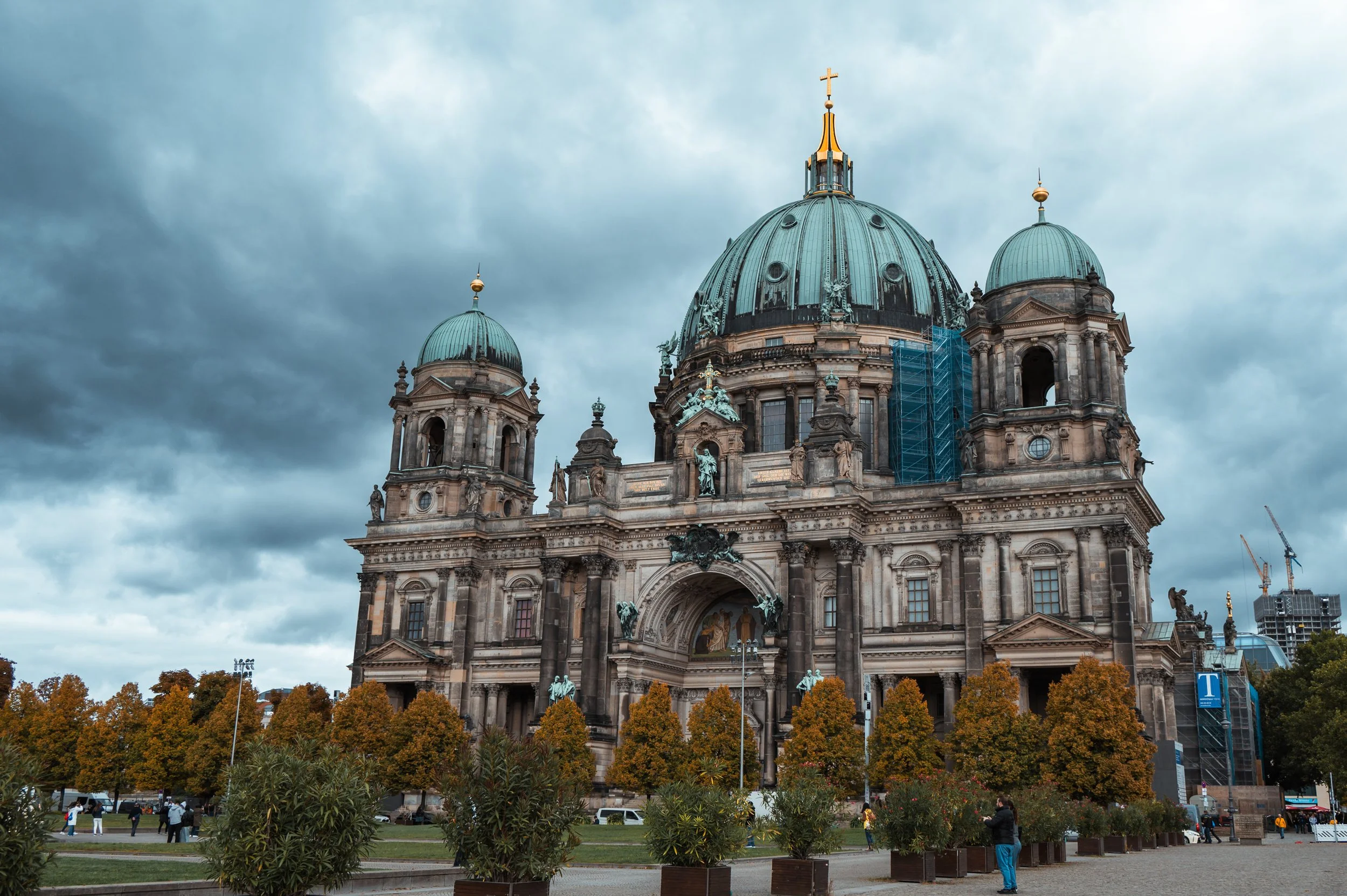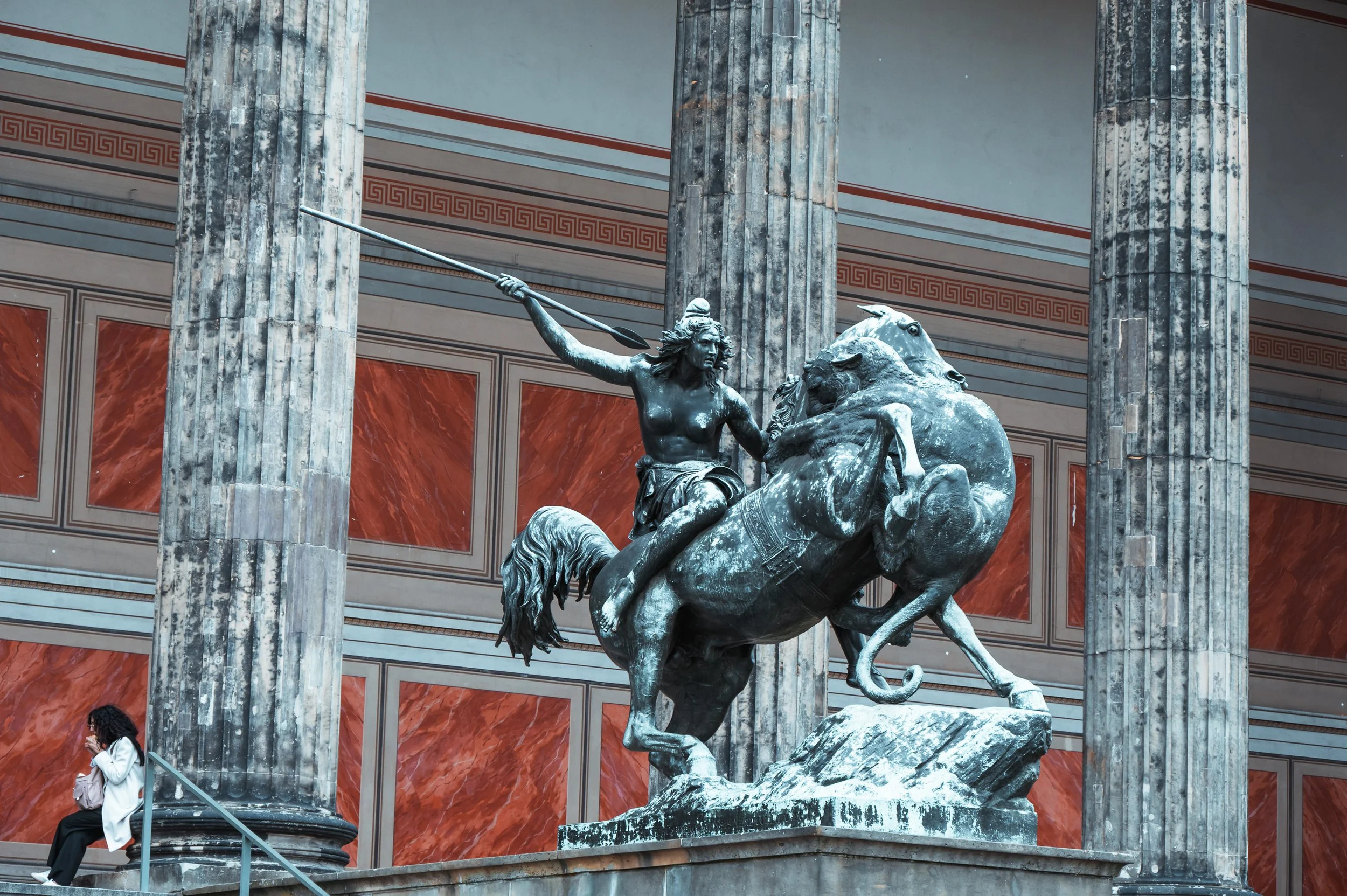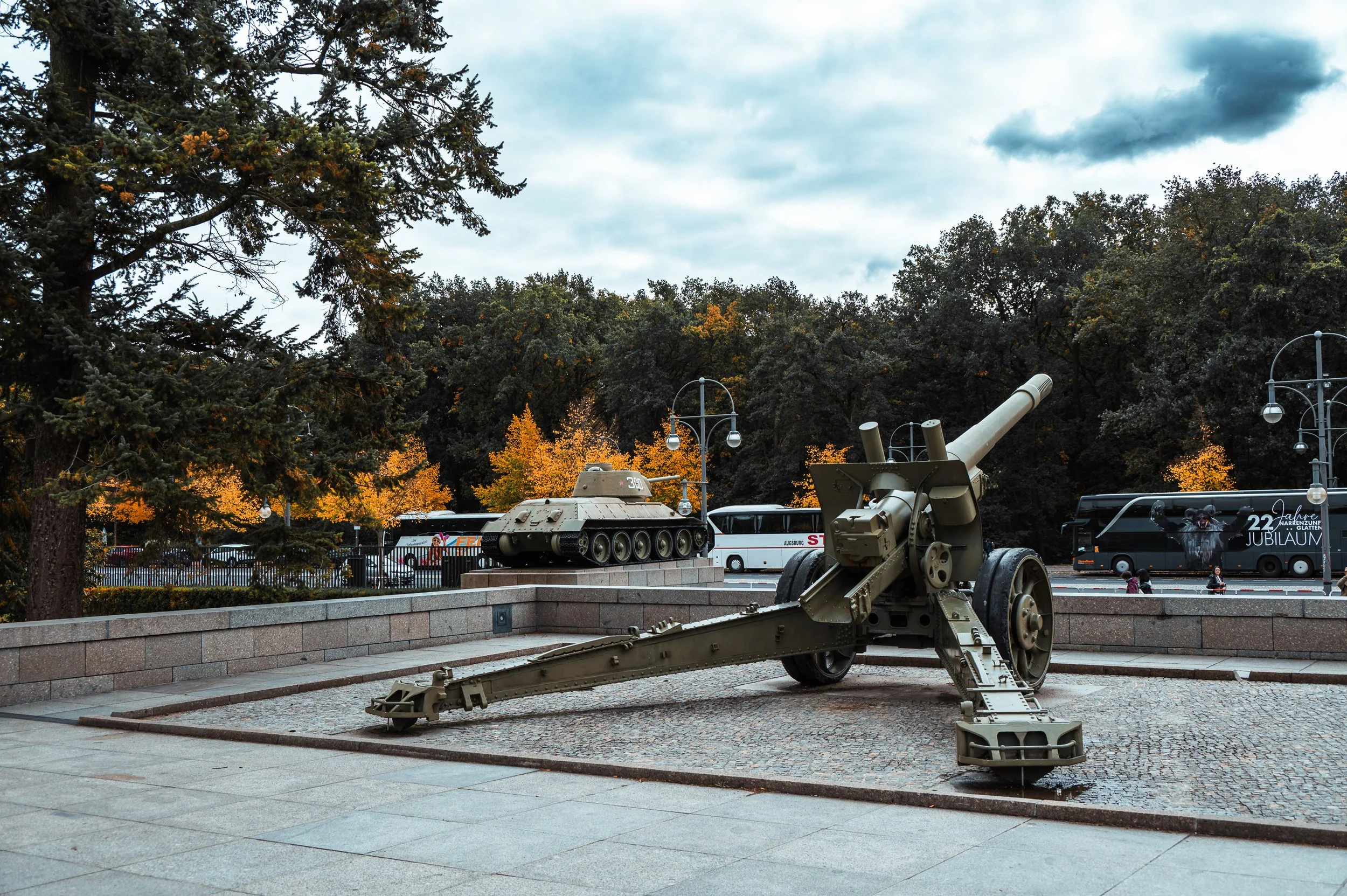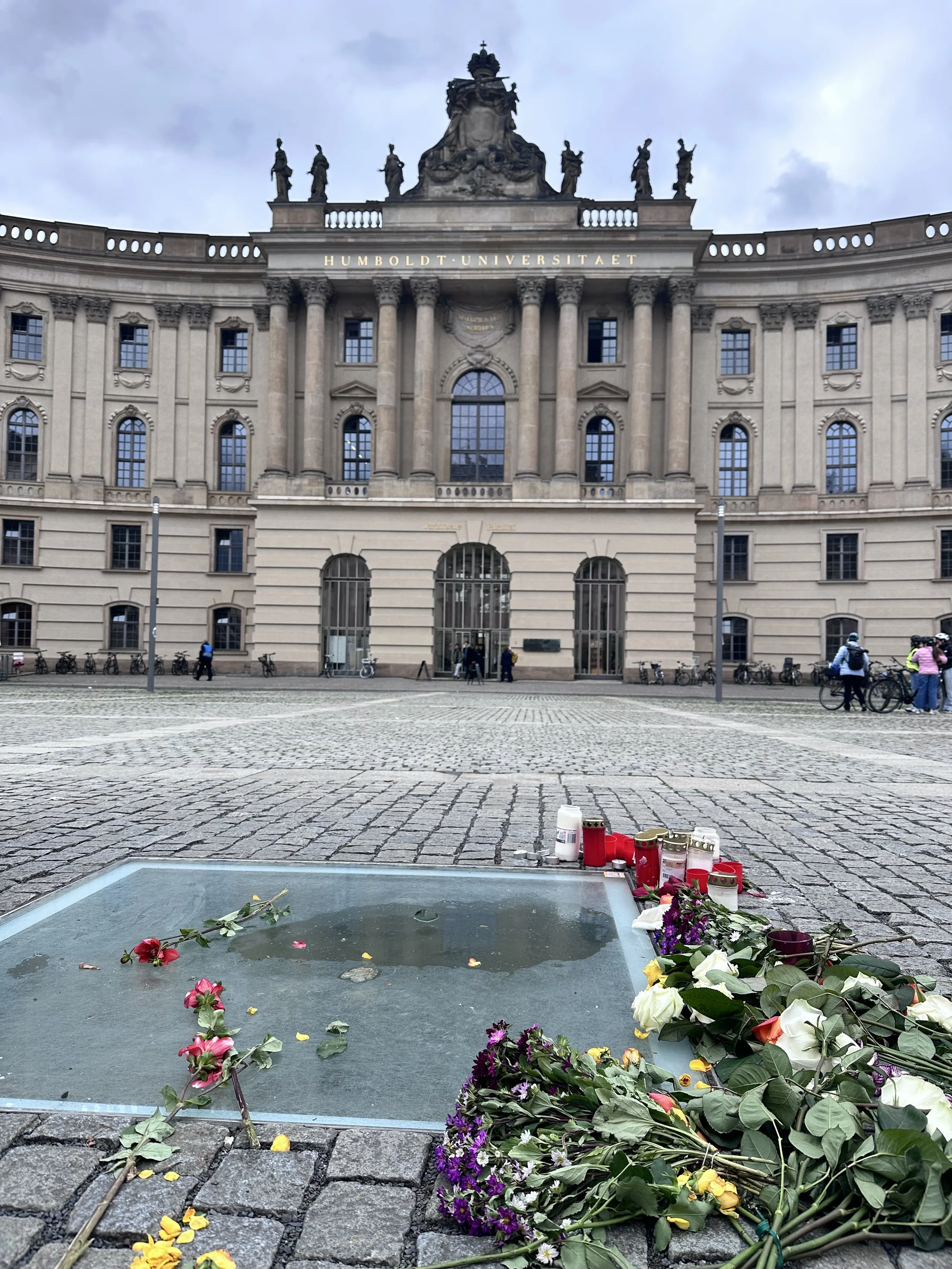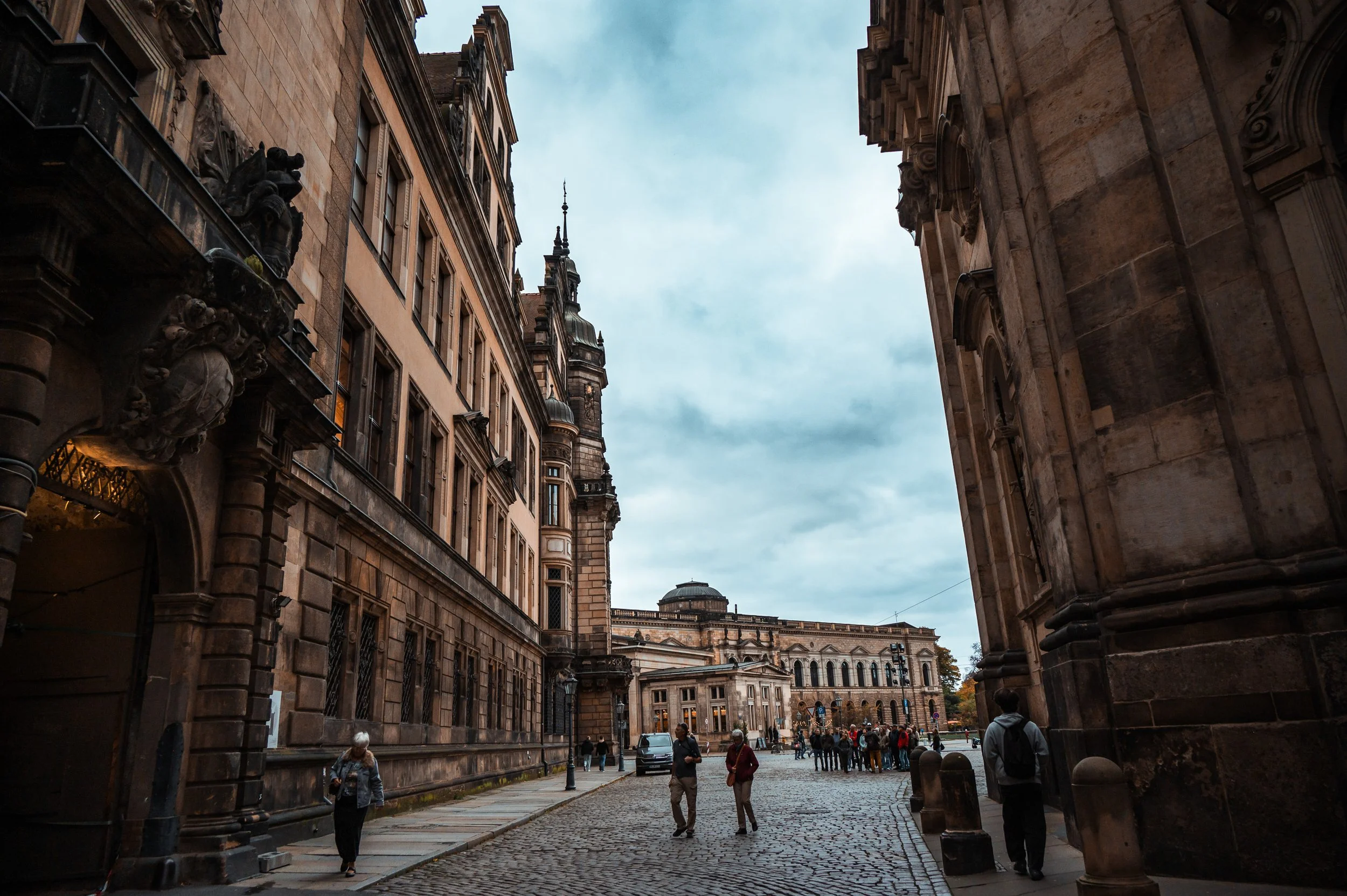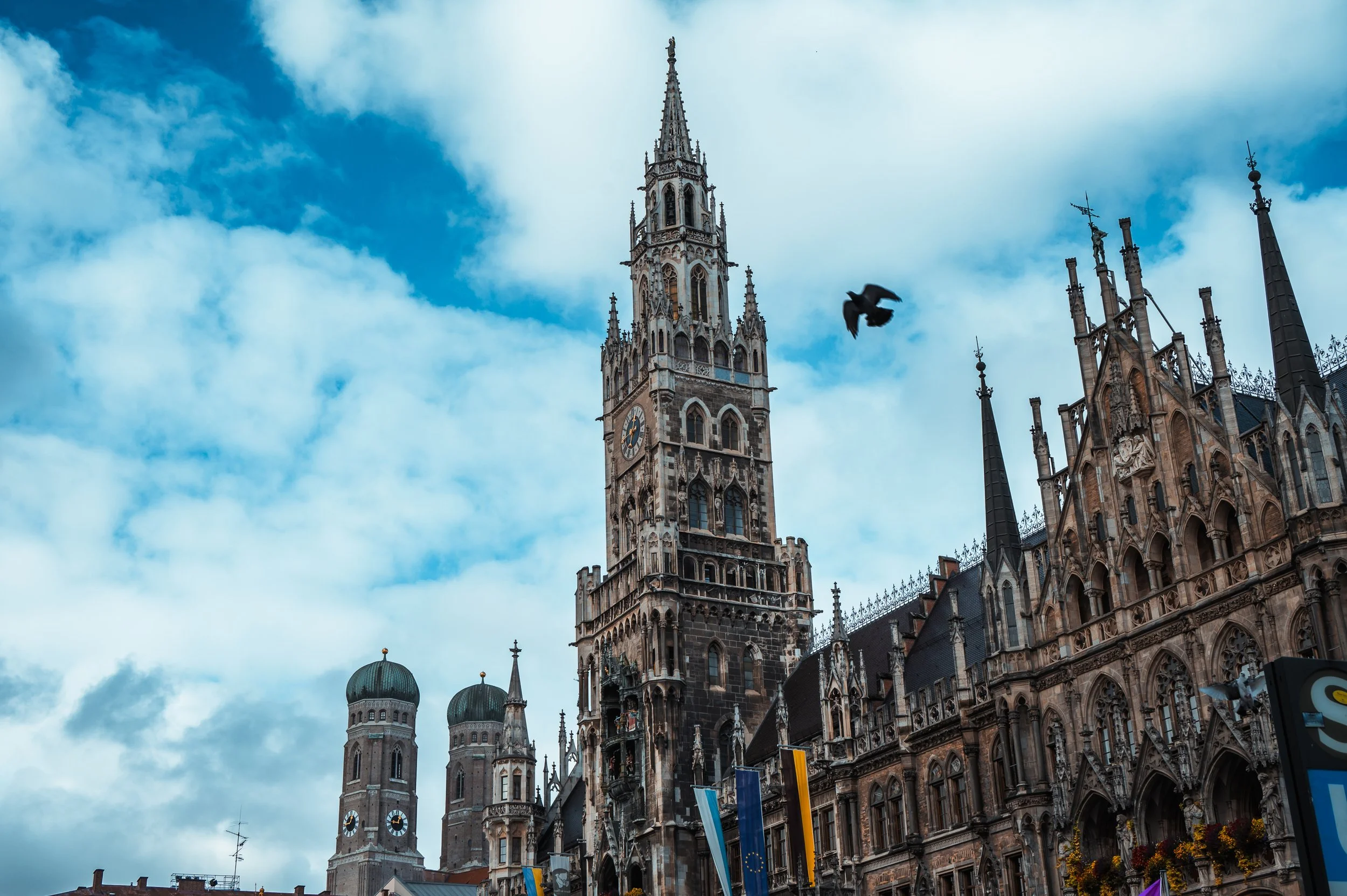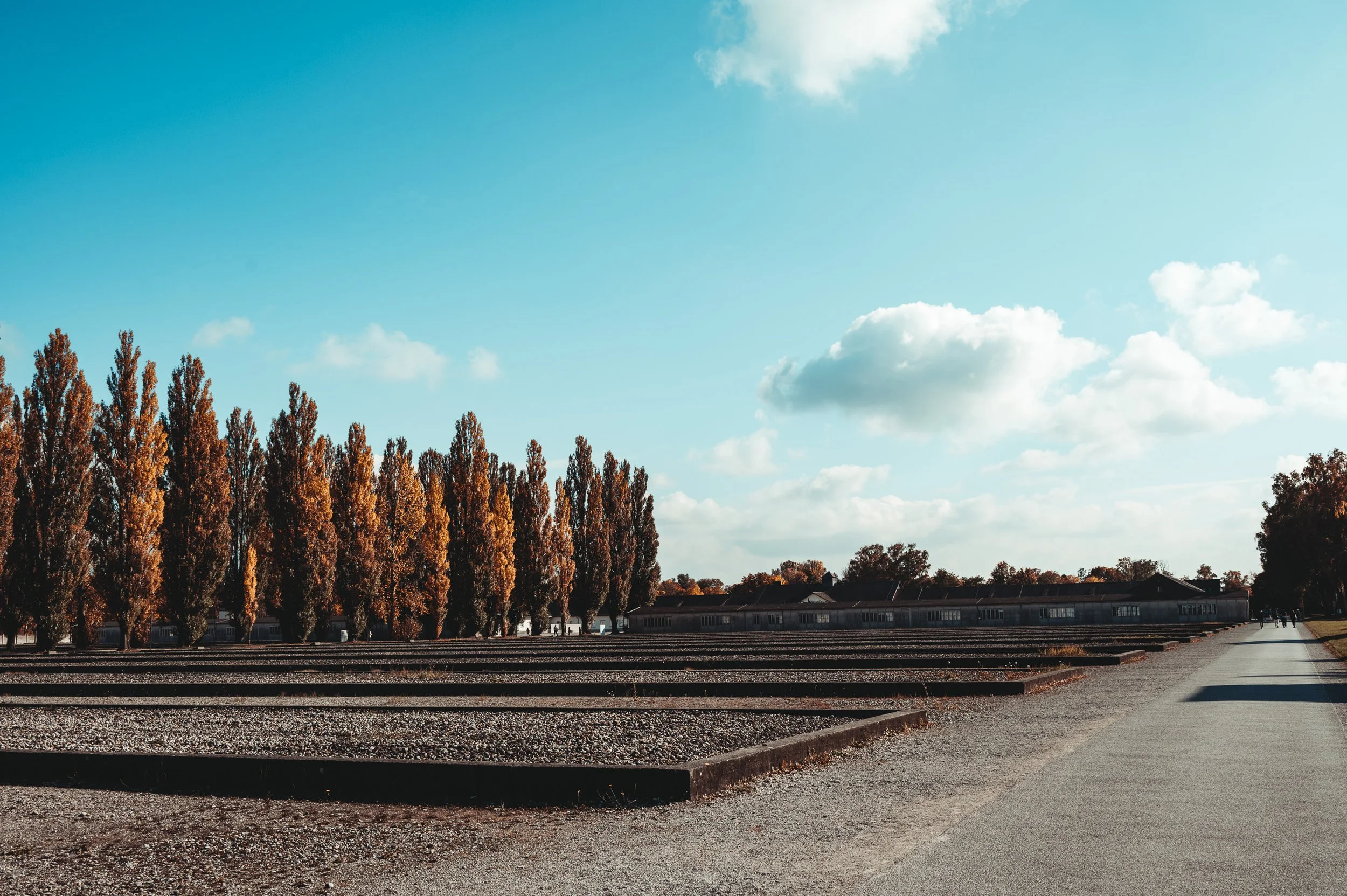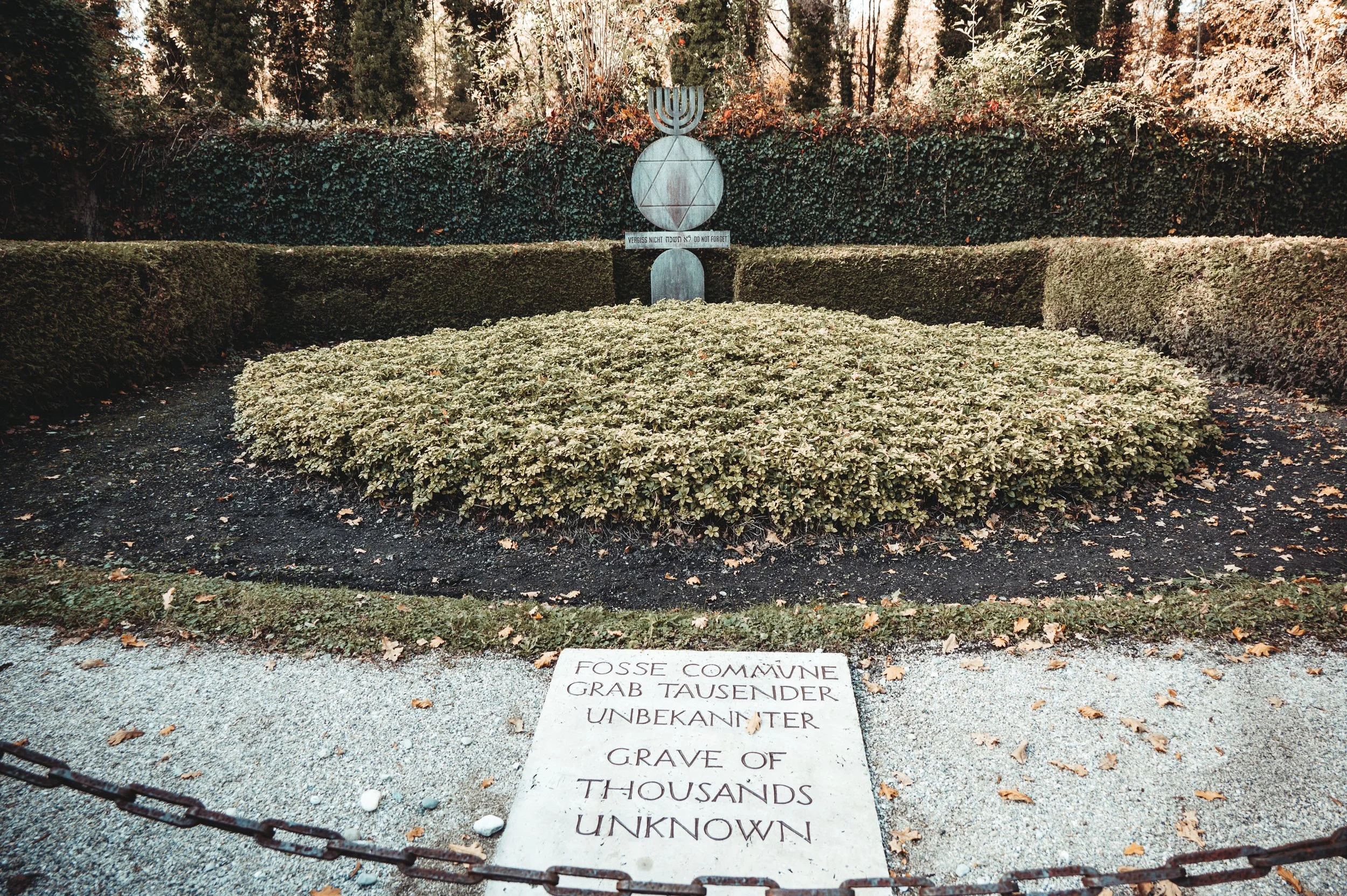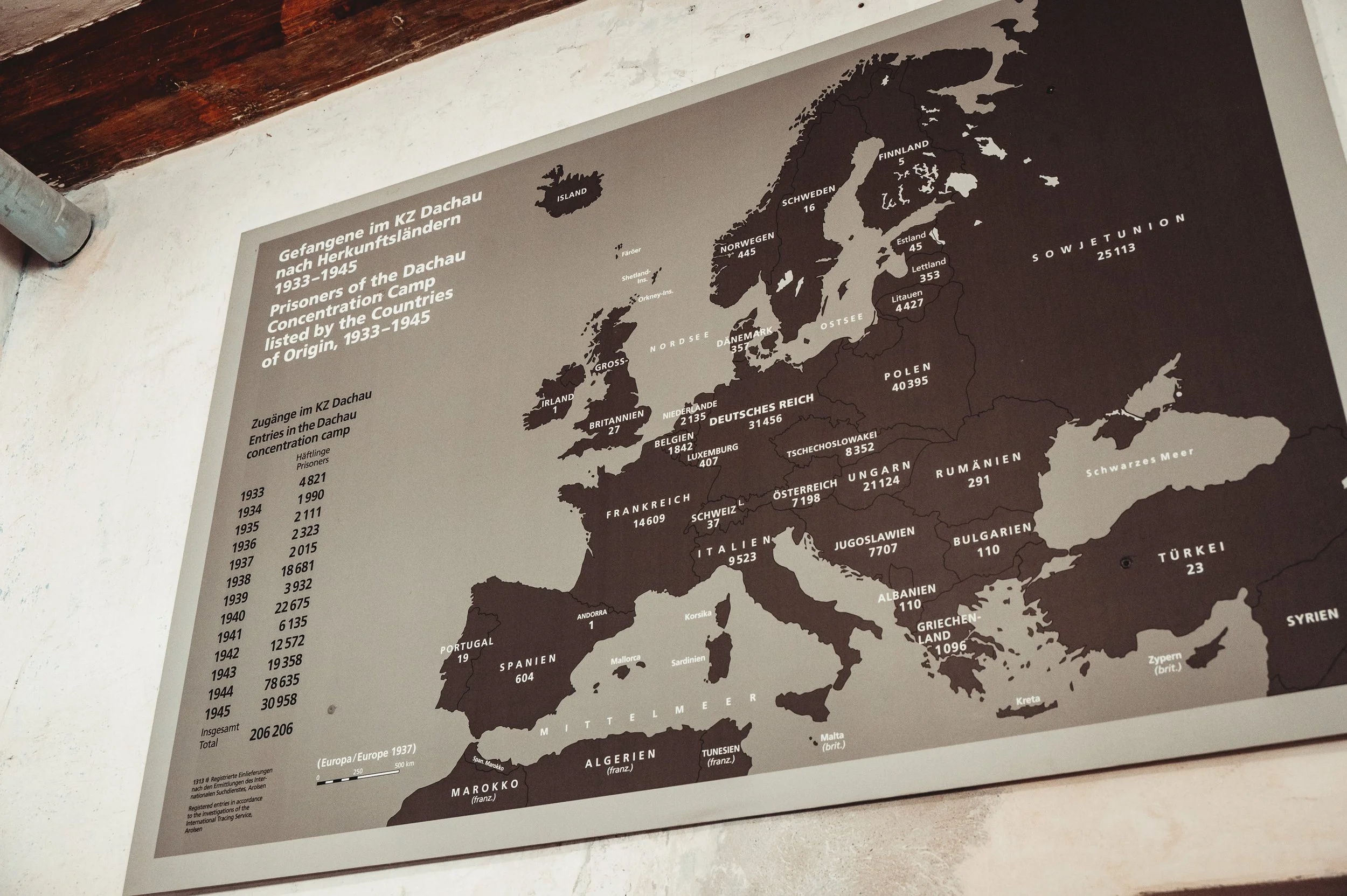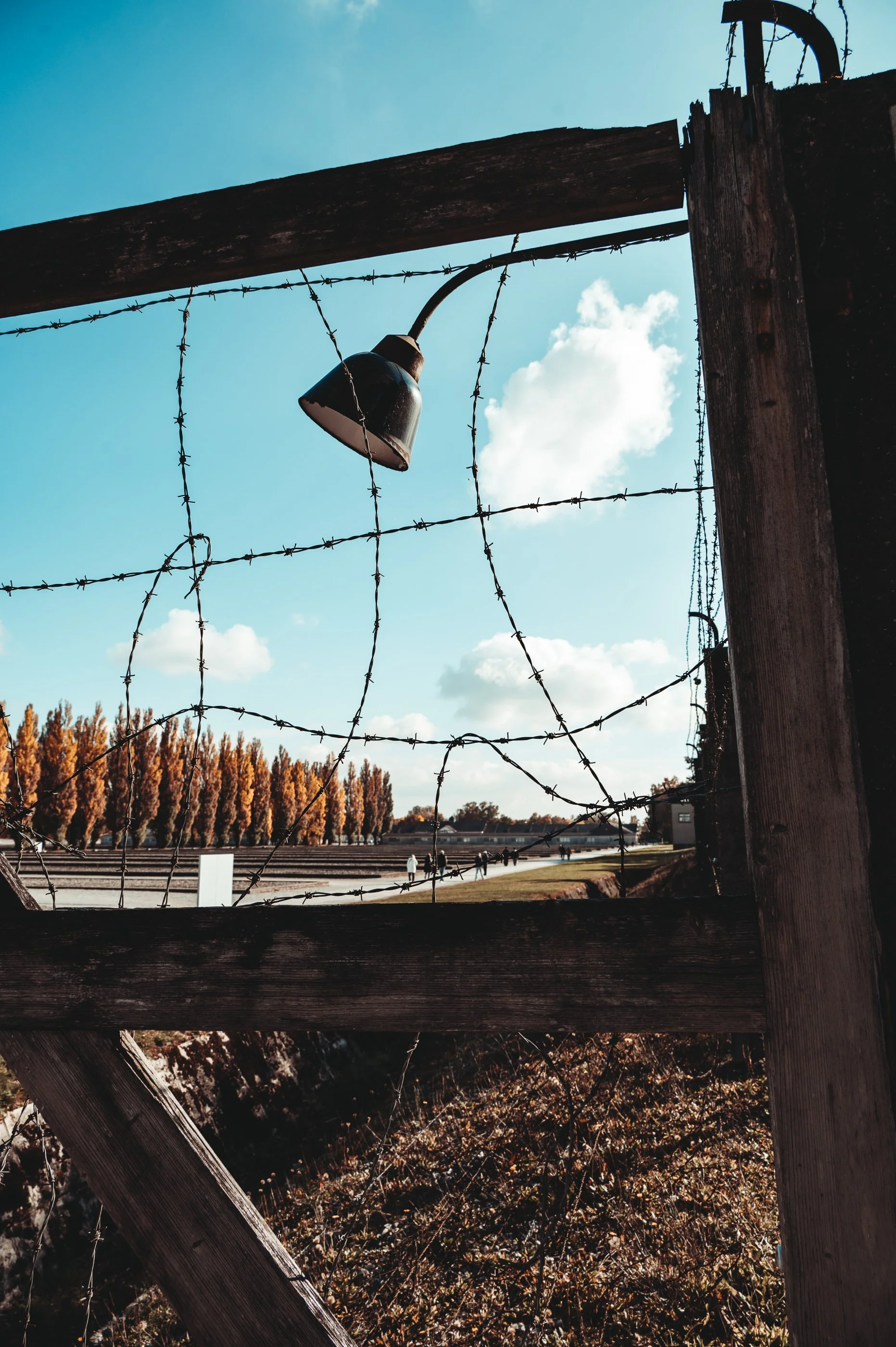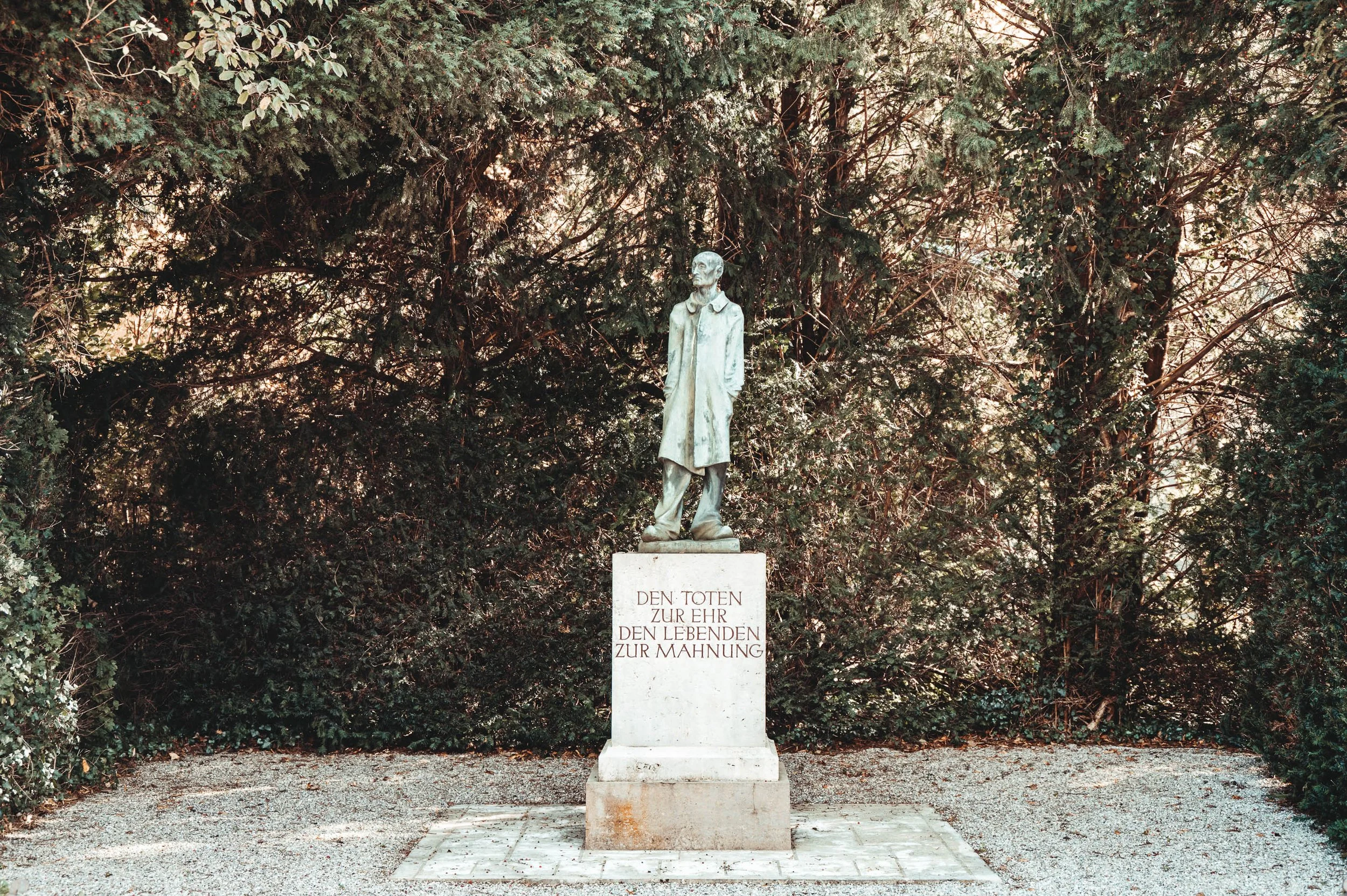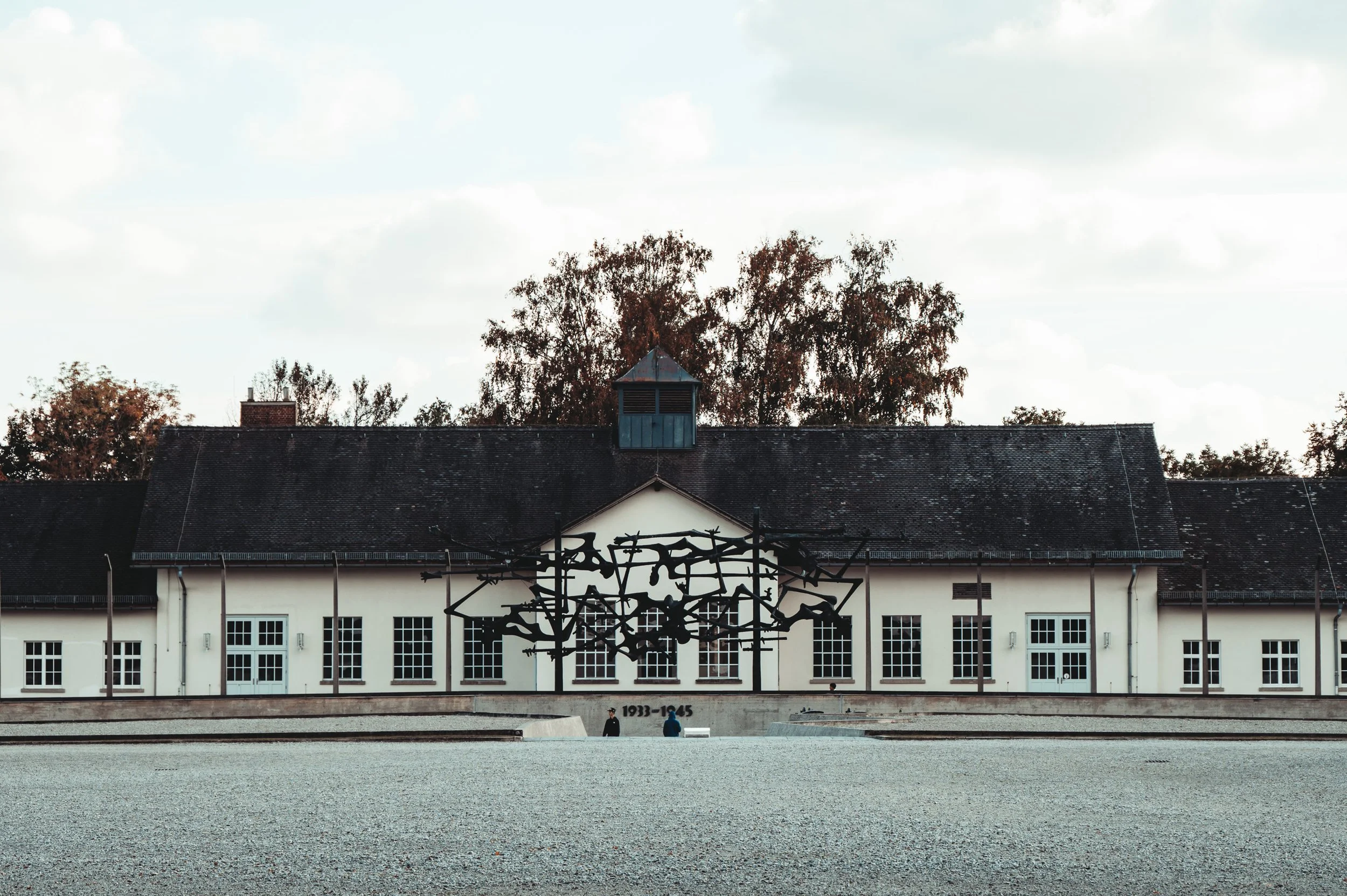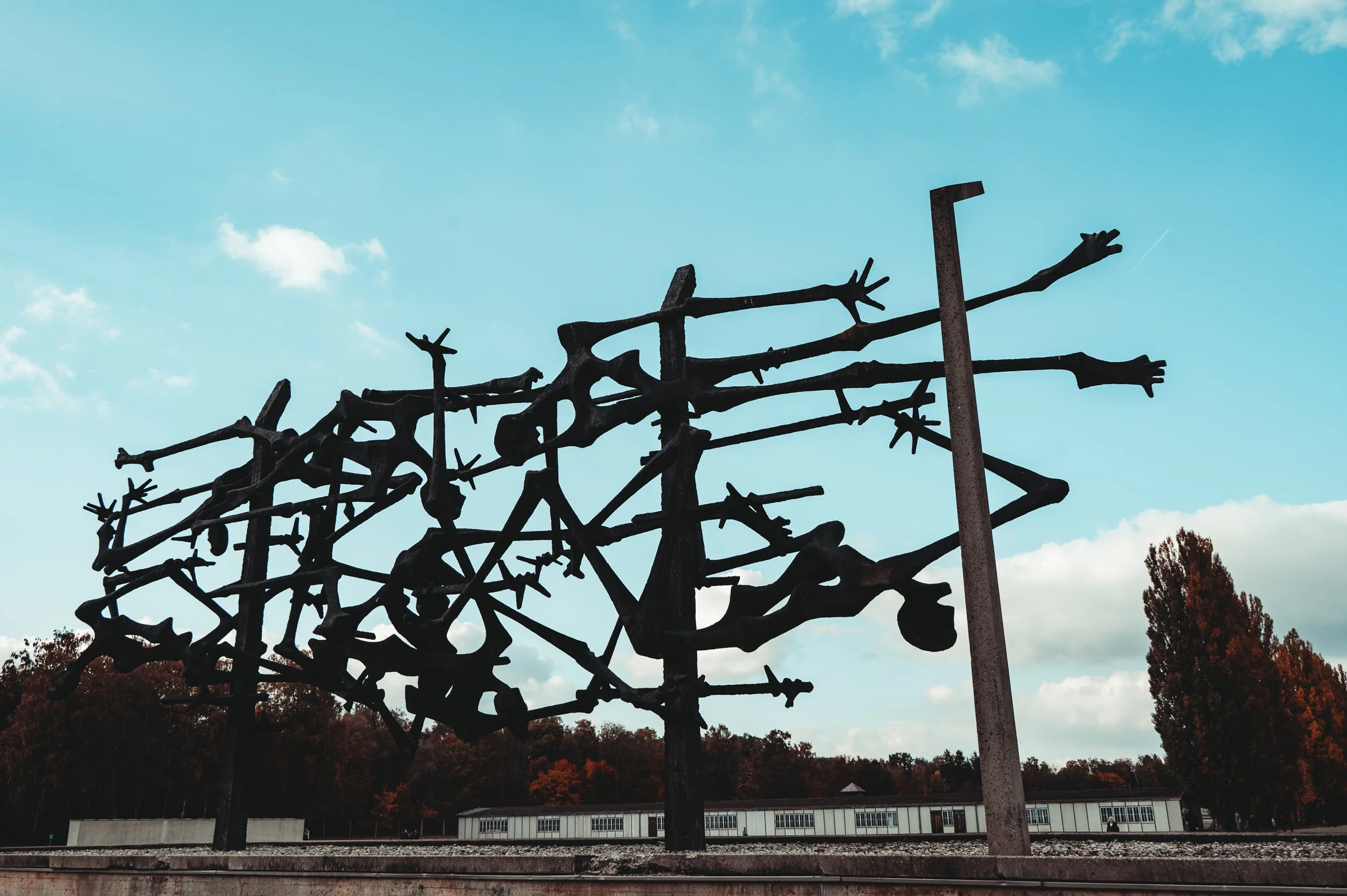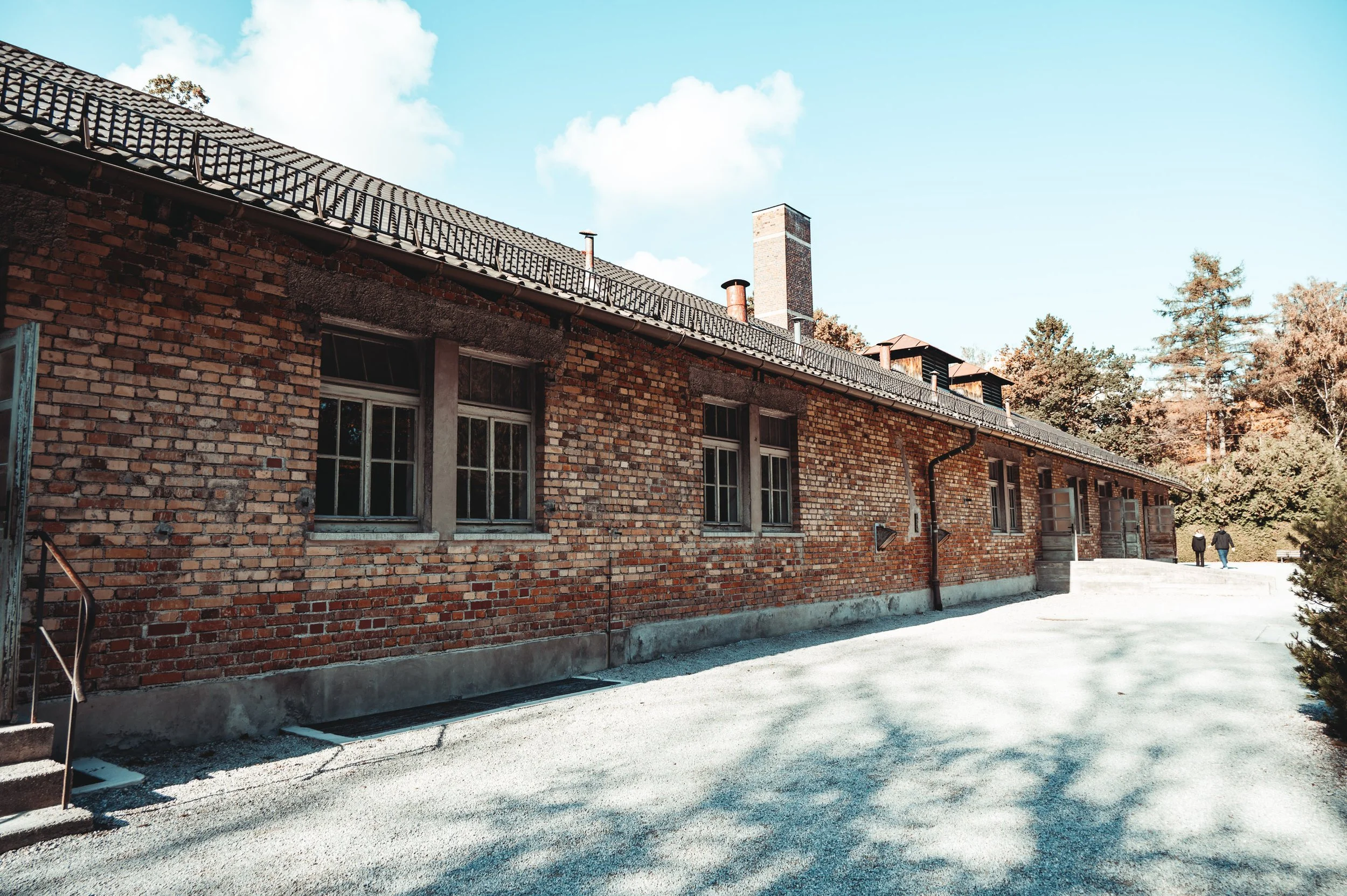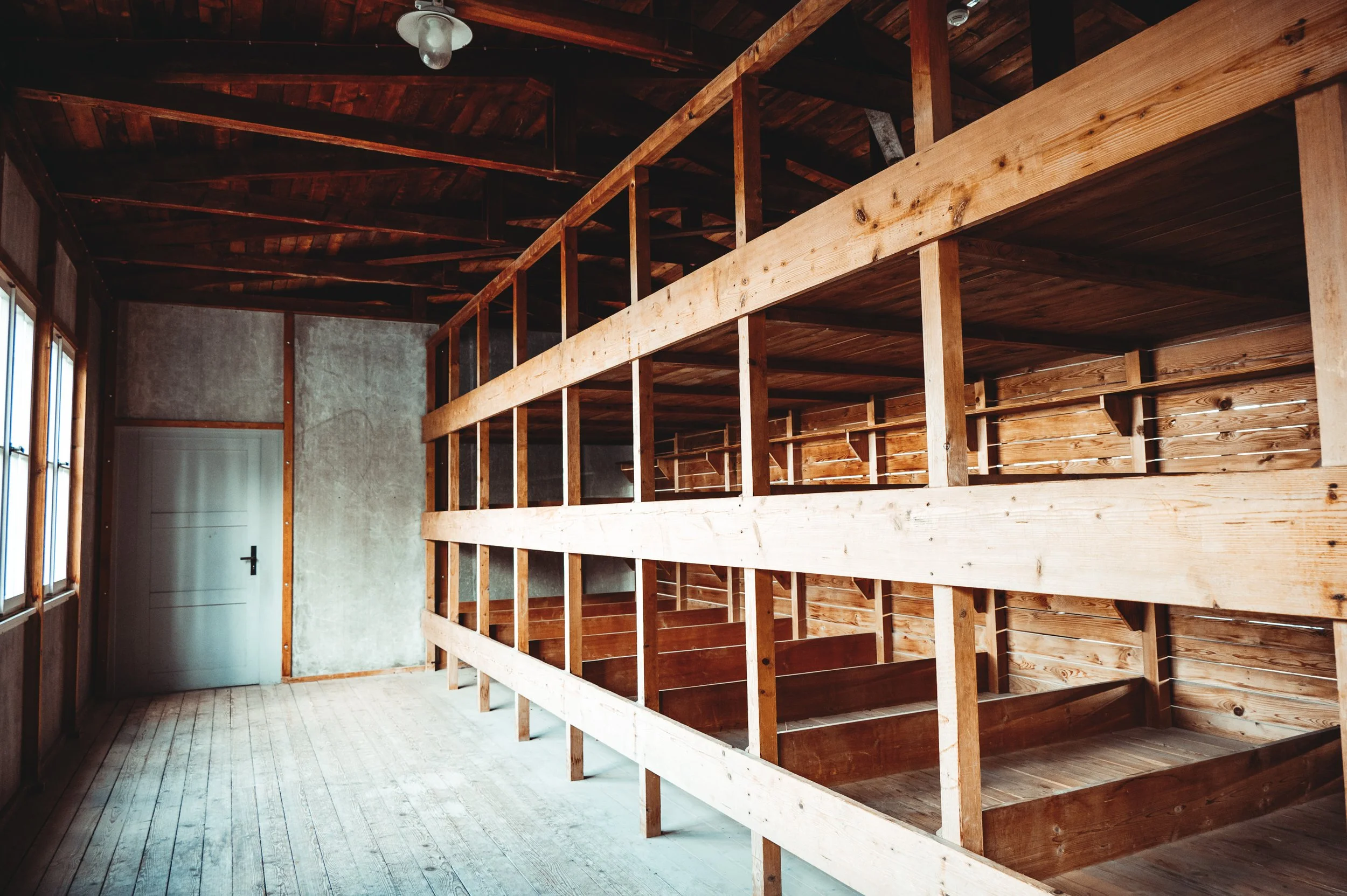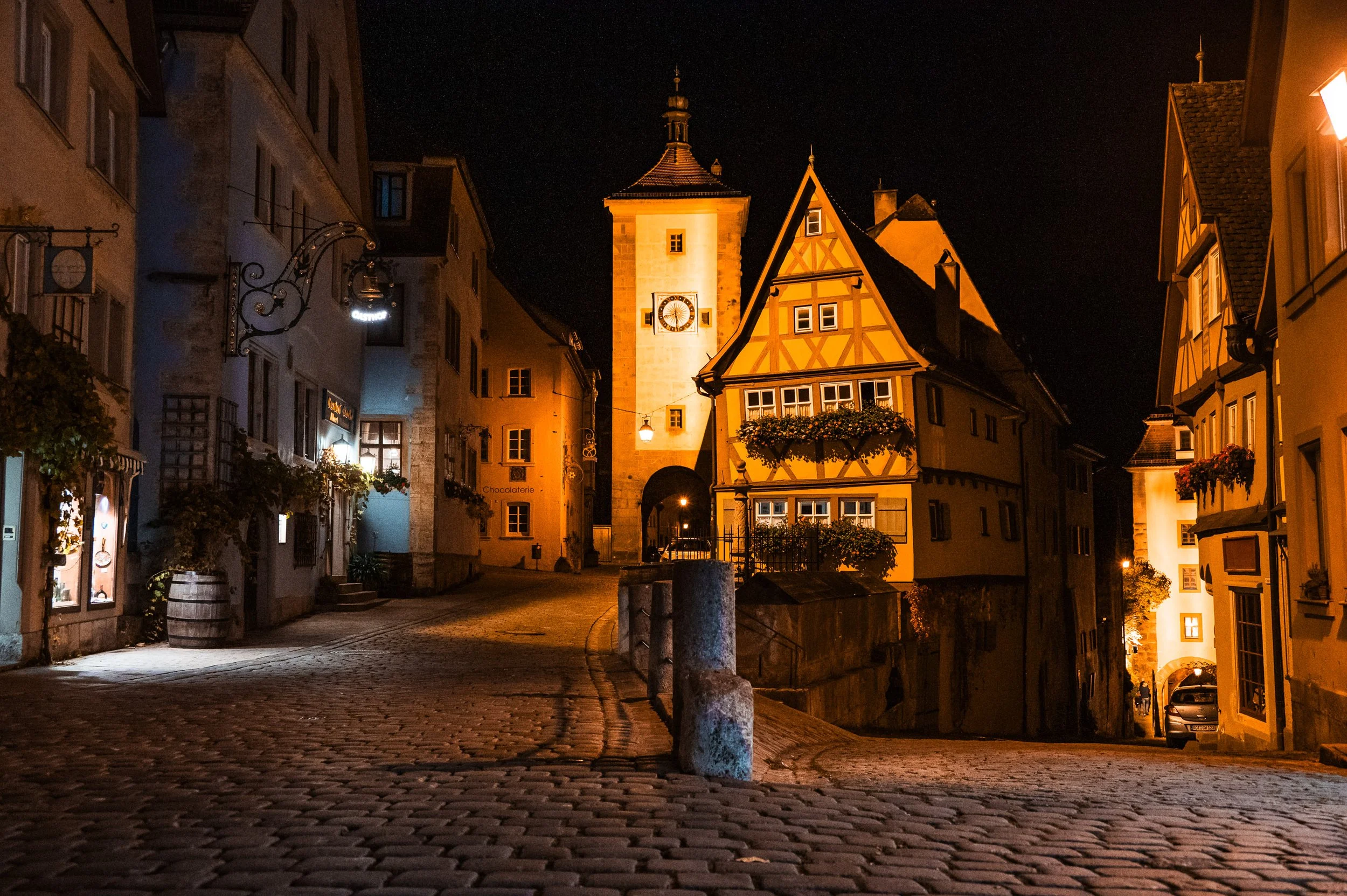A WWII History Lover’s Guide to Germany
I’ve been drawn to World War II history for as long as I can remember, and Germany had been at the top of my list for years. This past October, I finally made the trip—spending two and a half weeks exploring cities, memorials, museums, and historical sites that brought decades of reading and research to life. It was my first time in Germany, and it certainly won’t be my last. There’s still so much more to see, and I’m already planning a return.
While our itinerary also included natural landscapes and cultural stops, the heart of the trip was rooted in WWII history. I spent time in Berlin, Nuremberg, and Munich, visited former Nazi rally grounds, walked through powerful Holocaust memorials, and stood on ground that still carries the weight of the past.
Some of the most meaningful experiences came from two private walking tours led by local historians. Their insight helped bring more context to what I was seeing and made it clear just how deeply Germany continues to engage with its history. Throughout the trip, I saw firsthand how the country invests in remembrance and education. At nearly every major site we visited, school groups were there too—something that really stood out to me.
In this blog, I’m sharing the WWII-related places that left a lasting impact, along with a few thoughts on how to approach a trip like this with intention. If you're hoping to dive deeper into the past on your next visit to Germany, this is a good place to start.
Please note: This post may contain affiliate links. This means I may earn a small commission, at no additional cost to you, if you make a purchase by clicking a link on this post. Thanks for your support!
Brandenburg Gate
Thoughtful Travel and Emotional Pacing
Traveling through Germany with a focus on WWII history is a powerful experience — one that deserves care and intentionality. The emotional weight of the sites we visited wasn’t a surprise, but it still hits differently when you’re standing in the very places where history unfolded.
We gave ourselves space to process. After heavier days — like those spent in Berlin and Munich — we made a point to slow down. We’d find a cozy spot for dinner, linger over drinks, and talk through what we’d seen. That breathing room made all the difference. It helped the gravity of the experience settle in, instead of getting lost in the rush from one site to the next.
Private tours were also a huge part of that. Being guided by historians allowed us to ask the harder questions, to sit with the answers, and to understand the context beyond the plaques and exhibits. It was personal, insightful, and allowed for deeper reflection than a self-guided experience would have offered.
How you choose to structure your trip depends on your travel style. We rented a car for more flexibility, which gave us the freedom to explore smaller towns and spend as much time as we needed at certain locations. That said, Germany’s rail system is well-connected and efficient — if you’re sticking to major cities, it’s a great option.
One thing I do want to touch on, because it stayed with me: not every visitor approaches these sites with the respect they deserve. At Dachau, we saw people walking through the gas chambers like it was just another stop on a sightseeing tour. A family posed their teenage children on the wooden bunks — a recreation of the bunks where victims slept, packed in three to a bed — and snapped photos like it was a photo op. Despite being a replica, it certainly doesn’t change the symbol of its meaning.
It was jarring. Disrespectful. And it shook us.
If you’re going to visit these places, do it with intention. These aren’t attractions to check off a list — they’re memorials, sacred in their own way. Show up present, curious , and humble. You don’t have to be an expert or have all the right words. You just have to be human.
The Memorial to the Murdered Jews of Europe
Berlin
Berlin was our first stop in Germany and it set the tone for the history-focused portion of our trip. It’s a city that doesn’t try to hide from its past—instead, it puts everything on display. Not just in museums, but on street corners, in quiet memorials, and within the scars left on buildings that still stand today.
We spent several days in Berlin and took a private tour with a historian who brought this complex history to life. It was sobering, intense, and unforgettable. These were heavy days but ones we entered knowing they would be. We balanced them with quiet dinners, walks through vibrant neighborhoods, and long conversations that helped us process everything we were learning.
Here are the key stops I’d recommend for anyone interested in WWII history and the Holocaust:
Memorial to the Murdered Jews of Europe
This powerful field of concrete stelae sits just a few blocks from the Brandenburg Gate. Walking through the grid becomes increasingly disorienting as the slabs grow taller and the path sinks deeper. It’s an emotional space designed to evoke a visceral response. Be sure to visit the underground information center, which tells personal stories of victims and survivors.
Topography of Terror
Built on the former grounds of the SS and Gestapo headquarters, this free outdoor and indoor exhibit traces the mechanisms of Nazi control and brutality. The nearby Berlin Wall remains lend an added layer of historical gravity. It's a site of remembrance and reckoning.
Führerbunker (Site)
Now a quiet parking lot with a single informational sign, this is where Hitler spent his final days and ultimately died. Our guide gave a step-by-step account of those final moments and what happened to his remains. It's a strangely unremarkable place, which in many ways feels appropriate.
German Resistance Memorial Center (Bendler Block)
This museum honors those who stood up to the Nazi regime—most famously Claus von Stauffenberg and the July 20th plotters who attempted to assassinate Hitler. The courtyard where they were executed is sobering, and the exhibits inside give voice to lesser-known resisters whose stories deserve to be told.
T4 Memorial – Memorial to the Victims of the Nazi Euthanasia Program
Set in an idyllic square near Tiergarten, this memorial marks the site where the systematic murder of over 70,000 physically and mentally disabled individuals was orchestrated. It's a heartbreaking reminder of how early the Nazi regime began targeting the vulnerable, long before the Holocaust.
Detlev-Rohwedder-Haus (Former Air Ministry)
This imposing structure once housed Hermann Göring’s Luftwaffe headquarters. It’s one of the last major Nazi-era government buildings still standing, and walking past it is eerie. Nearby are the former grounds of Goebbels’ Propaganda Ministry, making this a dense pocket of dark history.
Bebelplatz
This square was the site of the infamous 1933 Nazi book burnings. A glass panel in the ground reveals empty white bookshelves—an elegant and haunting memorial to lost knowledge and silenced voices.
Reichstag Building
A symbol of German democracy, the Reichstag has seen it all: the 1933 fire that the Nazis used to consolidate power, near-total destruction during WWII, and its later rebirth as the seat of modern Germany’s parliament. You can still see battle scars on the exterior. A visit to the glass dome offers both great views and symbolic transparency.
Soviet War Memorials
Berlin is home to two major Soviet war memorials, both of which are worth a visit.
Soviet War Memorial in Tiergarten: This one’s centrally located, near the Brandenburg Gate, and is both a grave site and a monument to Soviet soldiers who died in the Battle of Berlin.
Soviet War Memorial in Treptower Park: Larger and more striking, this site includes a grand statue and memorial cemetery. It’s a bit out of the way but incredibly impactful and often missed by first-time visitors.
Sachsenhausen Concentration Camp (Day Trip)
Just outside the city, this former concentration camp is a sobering but essential day trip. Sachsenhausen served as a model for other camps and was the training ground for many SS officers. The on-site museum does an excellent job contextualizing what happened here.
Anhalter Bahnhof
Once one of Europe’s busiest train stations, this bombed-out ruin played a darker role during the war as a deportation point for Berlin’s Jewish residents. Nearby, a WWII-era bunker designed by Albert Speer now hosts exhibitions and performances, bridging past and present.
Postwar & Cold War Sites Worth Visiting
While Berlin’s Nazi history is often the focus, I found the postwar and Cold War sites equally powerful in understanding how the city evolved—and fractured—after 1945.
East Side Gallery
This open-air gallery stretches over 1.3 kilometers and is the longest preserved section of the Berlin Wall. Covered in murals and graffiti, it’s an evolving expression of freedom and resistance. Some artworks are joyful, others mournful. All of them remind you that this wall once divided families and ideologies.
DDR Museum
An interactive museum that dives into everyday life in East Germany. You’ll see a reconstructed East German apartment, step inside a Trabant car, and get a sense of what it was like to live under constant surveillance. It’s immersive and incredibly well done.
Deutschlandmuseum (Deutschlandmuseum Berlin)
A newer addition to the Berlin museum scene, this immersive experience walks you through 2,000 years of German history using cutting-edge technology. It’s engaging, fast-paced, and perfect if you want a broader overview of how Germany became the country it is today. The highlight for us here was the WWI bunker. It was a remarkable, immersive experience. The WWII portion was unsettling and sobering, as it should be.
Checkpoint Charlie
While admittedly more touristy, Checkpoint Charlie is still worth a quick stop. The museum here offers valuable insights into the escapes, tensions, and day-to-day realities of the Cold War divide.
Stasi Museum or Berlin-Hohenschönhausen Memorial
For a deeper dive into East German surveillance, these museums explore the role of the Stasi and what life was like behind the Iron Curtain. If you have time, they add an important layer to the postwar narrative.
Dresden Historical Center
Dresden
Dresden wasn’t originally on our radar, but I’m so glad we made time for it. Known for its Baroque beauty and tragic wartime destruction, Dresden is a city that tells a powerful story of both devastation and resilience.
We stayed in the restored historic center, where buildings like the Frauenkirche have been painstakingly reconstructed after being reduced to rubble in the firebombing of February 1945. Walking through the Altstadt, it’s hard not to feel the weight of what was lost — and the incredible effort that went into bringing it back.
The real standout for us, though, was the Bundeswehr Military History Museum. It’s not your typical war museum. Curated with a critical, often uncomfortable lens, it doesn’t glorify conflict. Instead, it invites deep reflection on the role of war in society, the human cost of militarization, and how ideologies take root. The building itself is striking — a modern steel wedge cutting through a classical arsenal, designed by architect Daniel Libeskind to symbolize disruption and dialogue.
If you're interested in military history beyond the battlefield — how nations remember, what they choose to forget, and how narratives are shaped — this museum is a must.
Nuremberg
Nuremberg was one of the most emotionally layered stops on our trip. Known for its deep ties to the Nazi regime — and later, for the trials that brought many of its leaders to justice — the city offers a compelling look at how a place can be both a symbol of tyranny and accountability.
The Documentation Center Nazi Party Rally Grounds was a major highlight. Currently undergoing renovations, the new exhibition (opened in 2023) does an excellent job unpacking how the Nazi party rose to power and used mass rallies to manipulate public opinion. The museum doesn’t sensationalize — instead, it forces you to confront how ideology, spectacle, and propaganda can combine to terrifying effect. Walking the vast rally grounds afterward was sobering. The scale is almost surreal.
We also visited Courtroom 600 at the Nuremberg Palace of Justice, where the postwar Nuremberg Trials were held. There’s a gravity to the space — seeing where figures like Göring and Hess were tried for crimes against humanity brings the scale of the war and its aftermath into sharp focus. The adjacent museum provides powerful context on the legal framework that emerged from the trials, laying the foundation for modern international law.
Beyond the history, Nuremberg’s Old Town is beautiful — a blend of reconstruction and resilience. It’s a city that doesn’t shy away from its past, and that’s part of what makes it such an essential stop for anyone interested in this chapter of history.
Munich
Munich was the birthplace of the Nazi Party, and while much of the city was bombed during WWII, what remains (and what has been restored) tells a powerful story. From memorials to resistance fighters to unassuming buildings that once held chilling importance, Munich’s approach to remembrance is quieter but no less impactful.
Walking through the city, we came across what are sometimes referred to as “wounds of memory,” bullet holes in stone walls, shrapnel marks, and unrepaired facades. These subtle scars, intentionally left untouched, serve as a quiet yet potent reminder of the destruction and pain the war left behind. You won’t always find a plaque nearby, but their presence is unmistakable once you start noticing them.
We also took a powerful day trip to Dachau, the first concentration camp established by the Nazi regime and a place that deserves its own emotional space in this guide.
Here are some of the most meaningful stops to include in your historical visit to Munich:
White Rose Memorial & Ludwig Maximilian University
Located within the university, this moving memorial honors Sophie and Hans Scholl and other members of the White Rose resistance movement. They distributed anti-Nazi leaflets and were executed in 1943 for their bravery. Look down as you enter — the memorial begins with stone leaflets embedded in the pavement.
Don’t Miss: The White Rose Museum inside the university, which details their lives, resistance work, and legacy.
Feldherrnhalle
Once a Nazi rallying point and the site of the failed 1923 Beer Hall Putsch, today this monument holds deeper historical context. Just steps away is the Golden Path (Goldene Pflastersteine) — a small detour citizens once took to avoid giving the Nazi salute at the Nazi Honor Guard. It’s an understated but powerful symbol of quiet resistance.
Wounds of Memory” Sites
As you walk around the city, you’ll notice traces of history still etched into the architecture. The façade of the Bavarian State Chancellery and other government buildings still show bullet holes and shrapnel damage — remnants from the final days of the war that have not been restored as an intentional act of remembrance.
Tip: Some of these are unmarked, your guide or a local historian can help point them out and share their context.
Stumbling Stones (Stolpersteine)
As in many German cities, you’ll find small brass plaques embedded in sidewalks, each one commemorating an individual victim of the Holocaust. They list names, birthdates, and the fate of the person who once lived there. It’s humbling to stumble upon them in everyday places — outside apartments, schools, and offices.
Dachau Concentration Camp Memorial Site (Day Trip)
A short train ride from Munich, Dachau was the first Nazi concentration camp and became the model for others that followed. Walking through the barracks, the crematorium, and the gas chamber was one of the most sobering experiences of our trip.
While it’s a difficult visit, it’s also an essential one. That said, we were shocked by the lack of reverence from some visitors, people taking photos on the bunks, treating the space like a checklist stop rather than a memorial. It was jarring and disrespectful. If you go, go with care. Go ready to feel.
Tip: Guided tours are available and highly recommended for added context. For instance, consider this Half-Day Dachau Private Tour from Munich or a Full-Day Munich & Dachau Private Tour.
Eagle’s Nest (Kehlsteinhaus)
A popular tourist stop in the Bavarian Alps, the Eagle’s Nest was once a diplomatic retreat for Hitler. While the views are stunning, it now operates solely as a restaurant and has no dedicated museum or exhibits on Nazi history. We opted not to go, given its current function and limited interpretive value.
If you're planning to explore Munich's WWII history, I highly recommend booking a local guide. Our private tour allowed us to dive deeper into the history, ask specific questions, and have meaningful conversations about how the city has reckoned with its past. It added so much depth to sites like the White Rose Memorial and the buildings that still bear the physical scars of war.
Pacing was also key. Some of these places carry a heavy emotional weight, and giving ourselves time afterward to decompress (maybe over a quiet lunch or a walk through the Englischer Garten) helped keep the trip balanced. If you're visiting multiple memorials or museums in a day, try to space them out and give yourself moments to reflect.
And lastly, approach these sites with intention. Munich is beautiful, but its history is layered and complex. The more space you make for that complexity, the more rewarding the experience becomes.
Rothenburg ob der Tauber
Rothenburg ob der Tauber
Rothenburg ob der Tauber was a deliberate detour in our itinerary: a breath of fresh air after the emotional weight of Munich and Nuremberg. With its medieval walls, half-timbered houses, and cobbled lanes, it feels plucked straight from the pages of a storybook. The kind of place where flower boxes spill over every window and every corner looks like it belongs on a postcard.
What I didn’t realize until we arrived, though, was that Rothenburg also carries a more complicated history. During the Nazi era, it was promoted as the idealized “German town” — a picture-perfect example of German heritage and tradition — and became a popular vacation destination for members of the SS. Its well-preserved architecture and nationalistic symbolism made it useful for propaganda efforts, and its image was carefully cultivated to serve the regime’s narrative.
That history isn’t front and center today as the town now leans into its tourism identity with Christmas shops, charming cafés, and walking tours. But once you know its past, it’s hard not to look a little closer at the blend of beauty and history woven through its streets.
We enjoyed our time there. It was a welcome pause in the trip, a chance to reflect and reset. And like many places in Germany, it reminded me that history is never too far below the surface.
Where to Go for More WWII & Historical Context
While our own travels focused on a curated mix of historical and scenic destinations, there are several other cities and sites in Germany that offer powerful insight into the country's wartime past, ideal for history buffs planning extended trips or return visits.
Frankfurt
While not a major WWII site, Frankfurt bears the marks of war and post-war reconstruction. Much of its Old Town was destroyed by Allied bombing and carefully rebuilt. Visit the Paulskirche, a symbol of German democracy, or take time to reflect at the Old Jewish Cemetery and Documentation Center, which highlights centuries of Jewish life — and loss — in the city.
Hamburg
For those heading north, Hamburg offers compelling history and poignant memorials. The St. Nikolai Memorial, a preserved church ruin, stands as a haunting reminder of the city’s devastation. Just outside town, the Neuengamme Concentration Camp Memorial is one of the most extensive and well-researched memorial sites in northern Germany.
Cologne
Cologne was almost entirely flattened during the war, and its post-war story is one of resilience. The NS Documentation Center (El-De Haus) is a chilling but worthwhile visit, housed in the former Gestapo headquarters — where you can still see original prison cells and inscriptions from those detained.
Wannsee Villa (Berlin)
Though already in the Berlin section of this blog, the House of the Wannsee Conference deserves an extra mention for travelers particularly focused on Holocaust history. It's the site where Nazi leaders formally coordinated the “Final Solution” and now houses a sobering, well-documented exhibition.
Obersalzberg & the Eagle’s Nest (Berchtesgaden)
While we opted out of this visit on our own trip, many travelers head south to Obersalzberg, where top Nazi leaders once kept summer homes. The Eagle’s Nest, often mistaken for a historically significant site, now operates as a restaurant with panoramic views. If you do visit, pair it with the Dokumentation Obersalzberg museum (note: currently under renovation), which offers a far more meaningful dive into the area's dark past.
Buchenwald Memorial (near Weimar)
For those traveling through central Germany, the Buchenwald Concentration Camp Memorial offers another deeply sobering — but important — experience. One of the largest camps on German soil, it now stands as a comprehensive educational site and place of remembrance.
Frankfurt Old Town
When to Go & How to Plan Your WWII-Focused Trip
Timing Your Visit
If your goal is to explore Germany through the lens of WWII history, timing can make a big difference, both practically and emotionally.
Spring and Fall are ideal. Crowds are thinner, prices are more reasonable, and the cooler weather lends itself well to walking-heavy days around city sites and memorials. We traveled in October, right after Oktoberfest, and the timing felt idylic: overcast, moody, with perfect autumn vibes and perfect level of crowds to make it comfortable.
Avoid major public holidays in Germany when museums and memorials may close or reduce hours — and when crowds swell in popular cities like Berlin and Munich.
Weekdays often make for quieter visits to heavier sites like Dachau or Topography of Terror. You’ll have more space (literally and emotionally) to absorb what you’re seeing.
Planning Tips
Prioritize the places that matter most to you. Some cities, like Berlin, could easily fill 3–4 days if you want to cover both major WWII sites and postwar history. Private tours can help you make the most of your time, especially if you're looking to dive deeper with context and discussion.
Decide on your pace and your mode of travel. Germany’s train network is excellent and connects all the major historical cities. That said, we chose to rent a car for added freedom and flexibility, especially when visiting smaller towns or pairing our itinerary with nature-based stops.
Do a bit of reading before you go. The sites hit harder when you understand the broader historical context. (I’m happy to recommend some books or documentaries if you’d like a pre-trip list!)
Be emotionally prepared. Many of these memorials and museums are heavy, and that’s the point. They’re not meant to be easy, but they are important. Build in breaks, enjoy a long lunch, find space to process and reflect. Travel like this stays with you, in meaningful ways.
Dress for comfort. From cobblestone streets to large outdoor memorials like the Holocaust Memorial or concentration camp grounds, you’ll be on your feet a lot. Pack walking shoes, layers, and maybe even tissues. Some places will stay with you long after you’ve left.
This trip wasn’t easy. Walking through places like Dachau, standing where the Third Reich once held power, and seeing the reminders of such a dark past up close — it was heavy, heartbreaking, and necessary.
But I’m really grateful we went.
If you’ve ever felt drawn to this kind of travel, not just sightseeing, but a journey that really makes you think, I can’t recommend it enough.
Thinking about your own trip to Germany?
If you're curious about visiting the WWII and Holocaust sites, or you'd like help planning a thoughtful itinerary that balances history with other experiences, I’d love to help.
I’ll work with you to create a trip that reflects what you want to get out of it — whether that’s deep learning, personal connection, or just seeing the places you’ve read about for years. With the right pacing, the right guides, and some intentional planning, it can be an unforgettable experience.
Reach out when you’re ready. I’ll help you plan a trip that’s meaningful, manageable, and 100% you.

